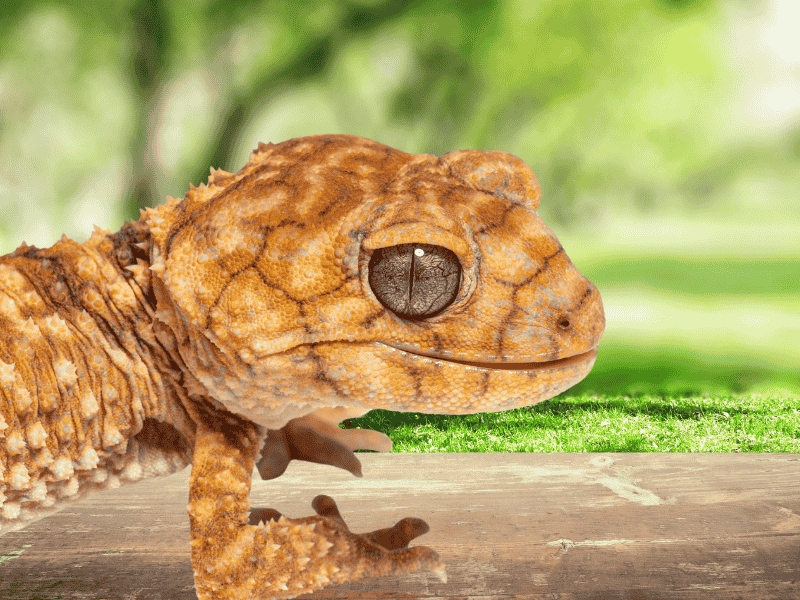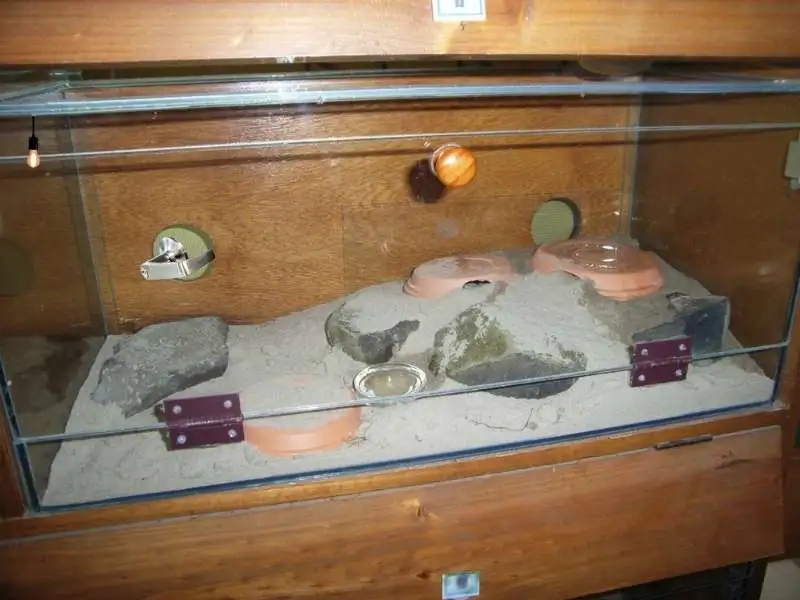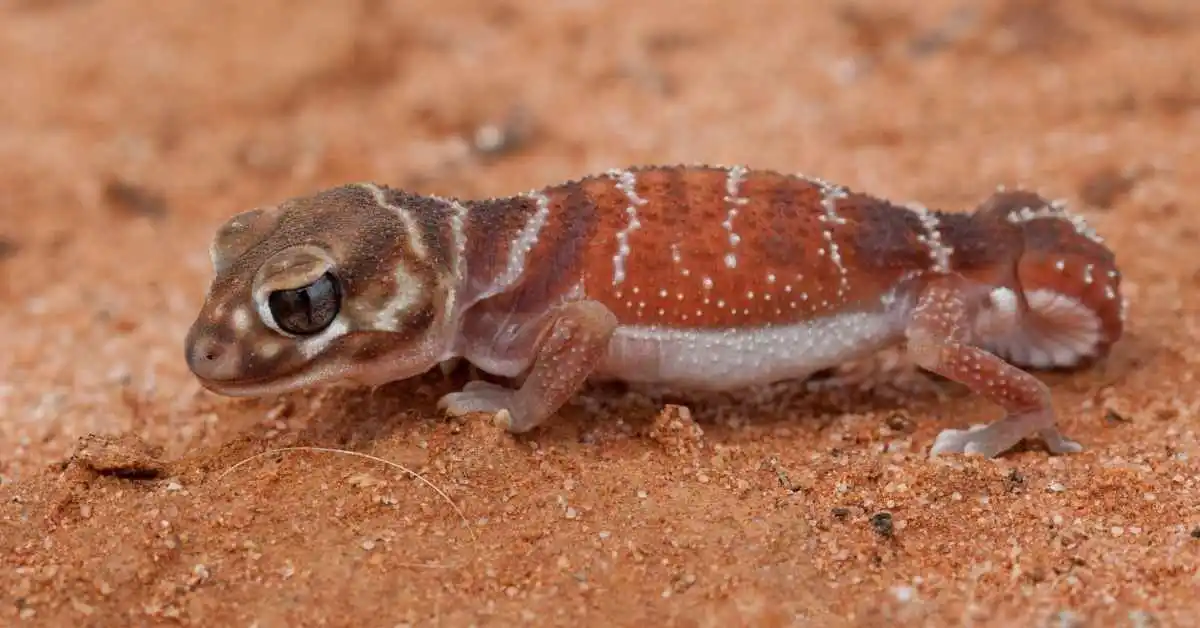Knob-Tailed Gecko || Care, Handling and Diet Profile
Knob-Tailed Gecko is a native of Australia and is a very interesting reptile. It is most famous for its rounded tail which resembles its snout and helps in camouflage. Its body is strong The head is broad, the tail is thick and tapers to a rounded tip, the body is usually colored with dark spots on it, it is nocturnal and eats insects. Also, they highly prefer dry environments such as deserts and forests and can make interesting pets if well cared for.
Facts of Knob-Tailed Gecko:
| Scientific Name | Nephrurus spp |
| Common name | Nephrurus levis |
| Weight | 6 to 10 inches long |
| Size | 5 to 8 inches long |
Coloration & Pattern of Knob-Tailed Gecko:
Knob-tailed geckos exhibit a range of coloration that helps them blend into their natural environment, usually light brown or mimicking the desert floor. This coloration not only helps them hide from predators. Rather, it helps them to regulate their temperature in their dry environment, in addition to their body design, the deep spots or bands on their body greatly help them to jump against predators. There are different types of marks.

Food and Diet of Knob-Tailed Gecko:
Generally, these insects are used in their diet, there are different types of them like crickets, mealworms, roaches waxworms, etc. Also, avoid eating wild insects because they contain pesticides. Also, make sure to rinse them with calcium and vitamin D supplements before feeding them if you keep them as pets, they get moisture from their food. They should also be provided with shallow dishwater. Food is offered daily, skipping 1 or 2 days every week.
Knob-Tailed Gecko Behavior:
They exhibit a wide variety of interesting behaviors, mainly coming out at night and foraging for food, as well as burrowing into the substrate to escape predators. These geckos do not like to communicate with each other. If they are threatened, they blend in with their surroundings and remain silent.
Habitat and Range of Knob-Tailed Gecko:
They are native to Australia and are usually found in dry environments such as deserts and sandy areas because these provide them with plenty of hiding space and a variety of insects to eat. It is mainly found in Western Australia and especially in the Northern Territory. This habitat helps them to find food, maintain better temperatures, and avoid predators.
Knob-Tailed Geckos As a Pet:
Breeding them can be a worthwhile endeavor, make sure both males and females are of the same age and are mature, say one or two years old, and provide them with an environment where they can hide. Many geese breed during the winter months and this involves lowering the temperature and light in their habitat. The female usually lays one or two eggs. The eggs are kept at a temperature of about 80 to 85 degrees Fahrenheit and hatch in 60 to 90 days. It is necessary.
Housing for Knob-Tailed Geckos:
Enclosure Setup:
An enclosure should not be smaller than a 10-gallon tank for a single gecko, although larger enclosures are recommended and they use more space well. It should be cleaned daily, otherwise once or twice a week is necessary. It should have a humidity level of 30-40 percent. It can also be used with carpets and paper towels.

Humidity:
For their best health, they need a low-humidity environment with a humidity level of 30 to 40%, plus use a spray bottle two to three times a week to maintain humidity. If the geckos are outside their home, they can be washed gently. The humidity in their terrarium can be measured with a hygrometer.
Substrate:
We discuss here the Knob-Tailed Geckos Recommended Substrate and Avoid Substrate.
Recommended Substrate:
The substrate covers the floor of the Gago’s terrace of the setup and it makes the wall attractive and also helps to maintain the humidity level as it should be in the environment where they naturally live in the forest. There should also be soft, fine sand and it should be completely replaced after at least three to four months. The substrate should be at least four inches deep. Reptile-clean paper towels or newspaper and coconut fiber can also be used for this.
Avoid Substrate:
Substrates that affect their health, such as calcium sand used in their habitats, should be avoided if they ingest it, which may endanger their lives and, in addition, their inhabitants. Pine shavings are used instead, which can be toxic to them, and also prevent them from eating rice or grains. They shouldn’t use hay straws either because they harbor bacteria that can affect their health and make them difficult to clean.
Heating and Lighting:
For these geckos, temperature and light improve their health and well-being. Their habitat usually maintains a temperature of 90 to 95 degrees Fahrenheit, and at night the temperature can drop to 65 to 70 percent degrees F, a slight decrease in temperature that does not harm them at all. They can also use a flow meter to check their living space can be heated in different ways such as using heat mats. Most of their habitats do not need UVB lights, but low-wattage bulbs are beneficial for them. Get 10 to 12 hours of sunlight a day. It also helps them absorb vitamin D and calcium, which support their bones.
Common Health Problems of Knob-Tailed Geckos:
They can face many health problems if they are not properly cared for, they can develop bone disease due to calcium deficiency and also respiratory infections. Also, if the amount of moisture is high, do not use stones in their living area because it may hurt their body. Consult a doctor to avoid health problems.
Breeding:
Breeding them can be a worthwhile endeavor. Provide them with a large breeding area where they can easily find hiding places and maintain a humidity of 30 to 40 percent. And breed in summer. Mix the male and female in their enclave. Usually, the male can display courtship displays such as tail wagging, etc. Use loose substrate for the female to lay eggs. Also, keep the eggs moist during the days they hatch to prevent them from drying out.
Lifespan:
In Captivity:
Generally, these geckos can live 10 to 20 years in captivity because they are so well cared for that they are not afraid of anything. Because they are given a good environment in which the temperature and humidity of their living space are taken care of which is very beneficial for their health and their food includes insects and crickets etc.
In the wild:
In the forests, their life span is five to 10 years because they are afraid of predators they are not well cared for and they are not provided with good food.
Knob-Tailed Geckos Handling and Care Tips :
Always be gentle with Knob-Tailed Gecko geckos and let them feel and get used to your presence. Support them when lifting them to avoid injury. Limit their handling sessions whenever they are new to your home. Schedule regular check-ups with a pet experienced in reptiles. Monitor for signs of health issues weight loss, or abnormal feces. Provide a secure and appropriately sized terrarium with adequate hiding spots.
Price And Cost of Knob-Tailed Geckos :
The cost of a Baby Gecko is $200 while a young Gecko also costs $300 to $400 and the cost of an adult Knob-Tailed Gecko is $400 to $500.Some of the best-colored and well-behaved geckos can fetch $800 or more.
Conclusion:
Knob-tailed geckos are primarily found in Australia. They are very beautiful and people keep them as pets and they are usually found in rocks and deserts. They live in trees to protect themselves from predators and their better care helps them survive. They are six to ten inches in size. Their age is 15 to 20 years during which male and female mate and lay eggs and from which babies are born. They are very attractive to people and are kept as pets in homes.







